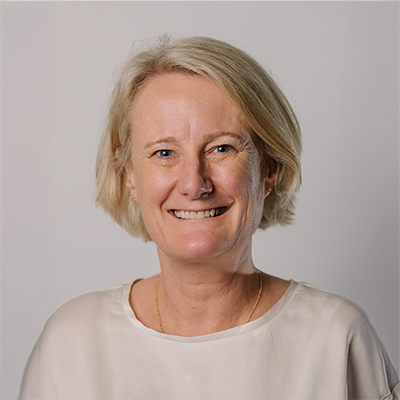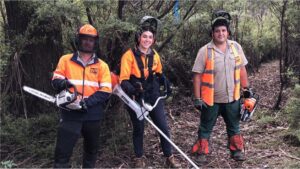
Social sector intermediaries: what are they and what do they need?
Field-building intermediaries play an important role in social sector ecosystems. But what do they do and what kind of funding do they need to sustain their work and impact?
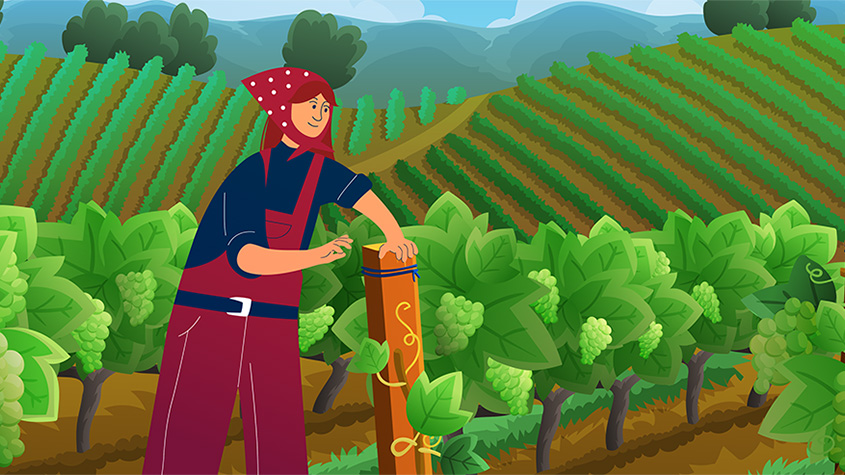
- The article describes what field-building intermediaries in the social sector are, what they do, and the type of impact they have.
- Case studies from a recent report surfaced numerous themes and observations about the funding challenges they face. Many highlighted the need for patient, long term funding that was untied and flexible and from a range of philanthropists. They also stressed the importance of catalytic funding from funders that understand that phase of development.
- Intermediaries are also keen for trusting relationships with philanthropy that play a role beyond providing funding.
The work of field-building intermediaries is complex and can be difficult to define. Yet, they play an important role in addressing some of the greatest social challenges.
These organisations engage and coordinate the efforts of multiple organisations towards a common goal. They can bring about systemic change in a way that is challenging for traditional not-for-profit organisations. Their unique sector or system level perspective enables them to identify challenging issues in their fields and work to achieve sustained social change.
But often these intermediaries struggle to obtain funding that is appropriate and timely to sustain their work and impact.
Funded by the Paul Ramsay Foundation, Social Ventures Australia has published: Insights on Australian field building intermediaries and their funding journeys towards sustainable impact and its case study companion Case studies of Australian field-building intermediaries. The report outlines the funding journeys and key success factors behind eight field-building intermediaries and identifies the funding approaches needed for deep and sustainable change.
Critically, the report also highlights for the first time what philanthropic funders need to understand about field-building intermediaries and how they can best support and enable these organisations to succeed. These observations for funders, which also give useful guidance to intermediaries, are set out in the short guide developed by Paul Ramsay Foundation based on SVA’s work, Growing fields, shifting systems: a guide to effectively funding field-building intermediaries.
The case studies surfaced 11 key themes and observations about what intermediaries need, the role and practices of funders, both current and future opportunities, and funding models (see Figure 1). Many of these will be addressed in this article.
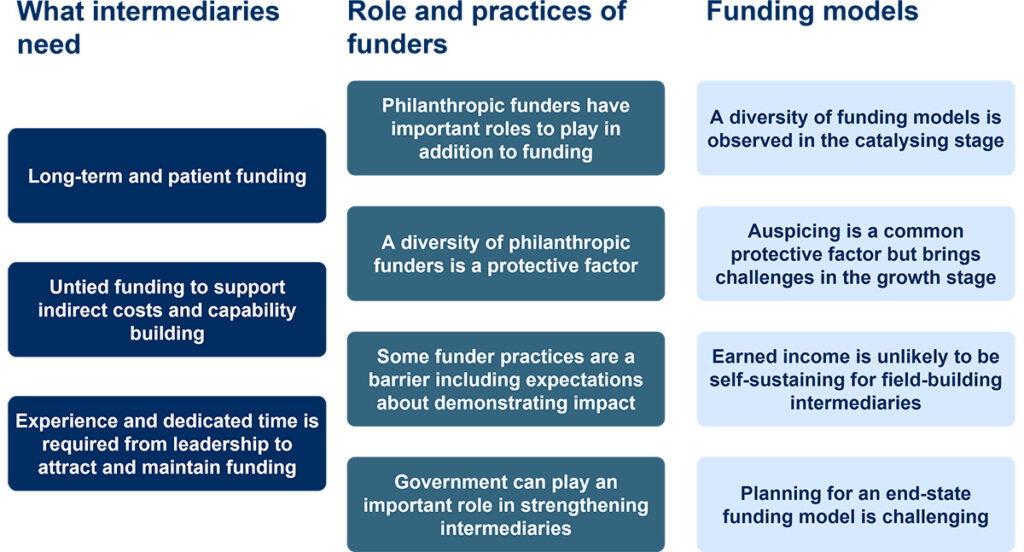
At the reports’ launch recently, CEOs from five of the case study organisations shared their insights and experience about the unique challenges that intermediaries face. Facilitated by Suzie Riddell, SVA’s CEO (far right in photo), the panel included (from left to right):
- Carolyn Curtis, CEO, The Australian Centre for Social Innovation (TACSI)
- Jane Hunt, CEO, The Front Project
- Sarah Hopkins, Co-chair, Just Reinvest NSW
- Dr Tessa Boyd-Caine, CEO Health Justice Australia
- Dianne Jackson, former CEO, Opportunity Child, current CEO Key Assets

This article answers the following questions:
- What are field-building intermediaries?
- What impact do intermediaries have?
- What are the funding challenges and opportunities for intermediaries?
- What role can philanthropy play beyond funding?
What are field-building intermediaries?
What do intermediaries aim to do?
Jane Hunt is CEO of The Front Project, an intermediary which works to improve the equity, accessibility and quality of the early learning system in Australia in order to improve outcomes for children experiencing disadvantage and vulnerability.
Hunt said that intermediaries respond to complex social and environmental issues.
“They are organisations and collaborations that focus on systemic change to tackle inequality or inequity. These types of organisations are growing in Australia, but are prevalent overseas because we know that complex social issues can’t be solved by one organisation or one program.”
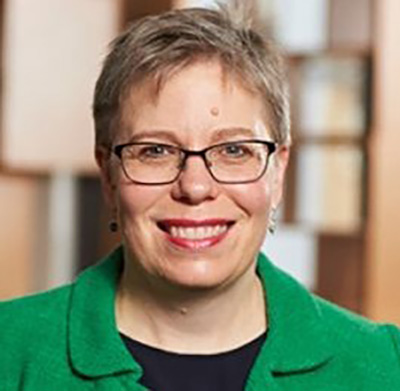
“We [intermediaries] seek to understand how issues are kept in place. We look at working with all actors or stakeholders around an issue to bring about change. And when we say actors or stakeholders, we call that the field.
We see and we listen to a whole system and we act on behalf of the whole, rather than a particular vested interest.”
“Intermediaries work in many ways. We undertake different activities depending on what is needed. So, often what we’ll do is seek to understand what will create change and put in the activities that are going to be levers for that change.”
According to Hunt, “Examples of field building could be developing the capability of people and organisations to think differently about problems they face. It could be convening people around different issues. It could be tackling research, developing policy, including beneficiaries (those who most experience an issue) in the solutions.”
Hunt called it sophisticated work because all of us have to understand what dynamics are at play at any time in a system.
“We have to understand relationships and power, and how to mobilise those to bring about change. We often focus on population level change. We support and we influence the actions of others.
“We see and we listen to a whole system and we act on behalf of the whole, rather than a particular vested interest. We enquire, diagnose, respond and iterate, always seeking the long-term impact.”
The terms intermediary and field-building intermediary – and the bounds of those definitions – mean different things to different people. The reports use the following definition: ‘[A field-building intermediary] engages and coordinates non-profits, funders, and other stakeholders to deal with critical, unaddressed needs in a field, such as building partnerships or sharing best practices.’1
How are intermediaries different from other not-for-profits?
Cycles of disadvantage are multi-faceted, and breaking these cycles requires ‘addressing a complex constellation of tangled up factors that defy ‘cookie cutter’ solutions’.2
Traditional service delivery-focused non-profit organisations cannot on their own address system-wide challenges.
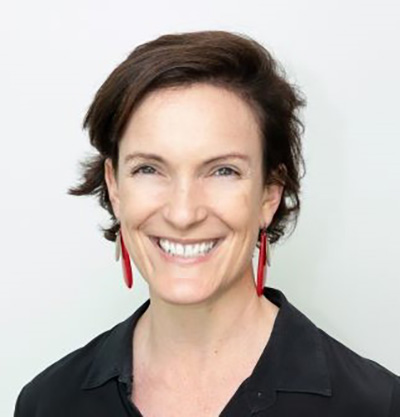
Tessa Boyd-Caine, Health Justice Australia CEO explained further and said that one key distinction between intermediaries and other not-for-profits is that as intermediaries, we think about what we are working between, and what we are mediating.
Health Justice Australia is an intermediary which describes itself as a national centre of excellence for health justice partnerships, a collaborative service model bringing access to legal help into healthcare teams and settings. Key activities of Health Justice Australia include developing an evidence base and translating it into knowledge, building capability of practitioners to work collaboratively and driving systems change through advocacy.
“With Health Justice Australia, we are working between service systems to help them respond better to multiple intersecting problems in the lives of people that they are helping.
“These kinds of intersecting health and legal problems are common in people’s lives. But our service systems behave as though they’re discrete and completely unrelated. Services are part of the complexity that communities and people are navigating even when those services are here to help.”
It’s a strategy that requires us to work with multiple actors at multiple levels of the system simultaneously…”
Through its support of health justice partnerships, Boyd-Caine, said Health Justice Australia, is itself an example of systemic change.
“We scale up the impact of these partnerships by working with practitioners right across the country building the capability of practitioners to collaborate.
“We complement that capability by building an evidence base. Then we bring that research and practitioner-based evidence into our policy advocacy where we are talking to the people who are designing, funding, and shaping the ecosystem at a state, regional, and national level. It’s a strategy that requires us to work with multiple actors at multiple levels of the system simultaneously, towards a shared purpose of improved service effectiveness. That in turn should impove health and justice outcomes in people’s lives.”
What are the different roles intermediaries play
The report identifies four categories which were defined by The Bridgespan Group3 :
- Field catalyst: Deploys different capabilities, quietly influencing and augmenting the field’s efforts to achieve population-level change.
- Capability specialist: Provides one supporting capability to the field.
- Evidence-action lab: Focuses on research and development, advising policy makers, and helping the field’s practitioners learn, improve and scale solutions.
- Place-based backbone: Co-ordinates local and regional cross-sector stakeholders and supports them in collectively transforming a fragmented field.
Hunt said “Some intermediaries play multiple roles. Some of them are actors in the system themselves as well as directly influencing the field building.”
For example, The Front Project plays a number of roles – it is a field catalyst that works to enable system improvement across the entire early childhood education and care sector but is also an actor in the system that directly supports the sector through upskilling and capability building programs.
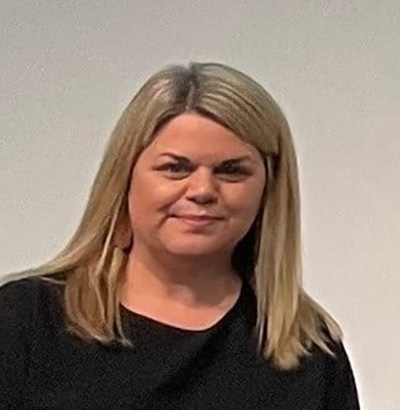
Carolyn Curtis is CEO of The Australian Centre for Social Innovation (TACSI), a social innovation organisation that aims to demonstrate new solutions and build the innovation capacity of Australia’s social change sector to tackle the country’s toughest problems. TACSI has attributes of an evidence-action lab and capability specialist.
Curtis said that TACSI had reinvented itself a number of times over its 13-year life, each time playing quite different roles. “It depends on the change you are trying to create. So to take a fixed position is not helpful over a longer time arc. “As we learn, those roles continue to evolve.”
We’re trying to understand what are the different parts of a system that you could bring together that would create a greater level of change.”
Curtis explained how she describes the three different roles that TACSI currently plays.
“The first is the role of a demonstrator. Sometimes folk struggle to imagine what’s possible. So we play a demonstration role normally at a small scale to help give a sense of what might be possible if you brought different types of expertise and knowledge together. Usually that unlocks all sorts of new ideas and horizons.
“The second is we see the whole as greater than the sum of its parts. We’re trying to understand what are the different parts of a system that you could bring together that would create a greater level of change.
Having someone able to see those tensions is critical.”
“The third and by far the most challenging role is as tension holder. The holder of the tension of the roles, of the institutions, of the interests, of the different types of knowledge, and of the power.“
“Having someone able to see those tensions is critical. Then, it’s about holding them and knowing when the scale tips a little bit too far one way.”
As the report says, these multiple and changing roles of intermediaries makes ‘planning for an end-state funding model challenging for intermediaries that need to remain responsive and agile.
‘It is well understood that the type of work undertaken by field-building intermediaries requires an ability to be continuously agile and/or opportunistic throughout the catalysing stage and into the growth stage. Changes in priorities or responding to an opportunity in the external environment can also open up new funding models which were not previously available or relevant.’4
What impact do intermediaries have?
What is the change intermediaries seek to make?
Intermediaries play a number of different roles, co-ordinating others, to make change in their particular field.
Examples from the case studies which highlight the range of influence and impact an intermediary can have:
- Enhancing the impact of other organisations and communities, such as Health Justice Australia’s work to build evidence and support capability with Health Justice Partnerships across the country.
- Working across systems to build the field, such as Indigenous Eye Health’s work with Aboriginal and other health organisations to co-ordinate services for Indigenous eye health.
- Directly influencing people’s lives, such as TACSI’s Family by Family program, which supports improvement in family’s lives.
The research report Evaluating the Results of Intermediary Organisations – A paper for intermediaries in Australia by Mark Cabaj explains some of the complexity in identifying and measuring the change intermediaries make ‘… whenever intermediaries witness – or even measure – a change, it almost always has been influenced by multiple actors, interventions, and factors operating in (an often messy) constellation of non-linear, cause-and-effect relationships’.5
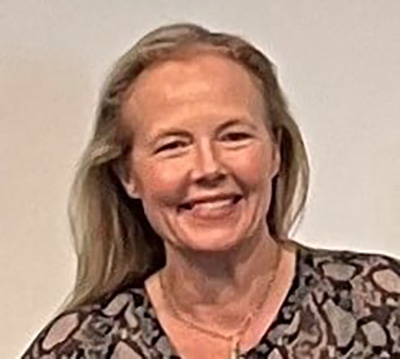
Sarah Hopkins is Co-chair of Just Reinvest NSW, an intermediary that works to reduce the number of Aboriginal people being imprisoned by using a justice reinvestment approach. This approach redirects resources from prisons into building stronger communities. To do this, Just Reinvest NSW works alongside Aboriginal communities to support place-based, community-led and data driven approaches to improve public safety and reduce criminal justice spending. As an intermediary, it describes itself as a backbone to place-based backbones.
Hopkins said, “In terms of impact when you are working with First Nations communities, particularly with a focus on incarceration, the chief outcome you need to have is that communities are leading.
“That took a long time with our first community in Bourke, NSW. Creating trust is a starting point, but it’s also an end point. It’s hard for government to understand that that is an outcome in itself – that communities trust enough to sit at a table with police. with courts, or with the school.
We can’t do business as usual to change the systems that are in place; it’s really going to require serious innovation and courage.”
“You need to be able to do impact assessments. But you need to be clear that that bureaucratic data is not what the end game is. You need to have resilience around data.”
“We’re not going to get everything right because we’re not a program that’s being rolled out. There’s so many external factors at play. What we need to do is change the mindset of government so that communities are allowed to fail, they’re allowed to try and not get things right.”
“Sustainability around the funding and support promotes innovation, because that’s what’s needed. We can’t do business as usual to change the systems that are in place; it’s really going to require serious innovation and courage.”
What are the challenges in demonstrating impact?
The case studies surfaced that one barrier to philanthropic support is funders’ expectations about how impact needs to be evidenced. Funders may expect to see evidence of outcomes for individual beneficiaries before they will fund or will require that impact be demonstrated early in the funding period.
This seems to be driven by funders’ lack of understanding of the invisible yet important and evolving role that field-builders play.
Being able to demonstrate evidence of impact or a contribution to outcomes enabled a number of case study intermediaries to secure additional or new funding from philanthropy and government.6
Intermediaries play a glue role and glue is invisible.”

Dianne Jackson, now CEO Key Assets is the former CEO of Opportunity Child an intermediary which, before it ceased operations, provided a range of functions to an emerging field of place-based systems change focussed on improving population-level outcomes for children experiencing vulnerability.
Opportunity Child (see case studies) demonstrated the attributes of a backbone to place-based backbones, field catalyst, capability specialist and evidence-action lab.
Jackson said the biggest challenge was articulating impact well enough for someone to support it with untied funding: “Intermediaries play a glue role and glue is invisible.”
Hunt believes that you have to work hard to find ways of measuring impact. “But it can be done. We developed a monitoring evaluation learning strategy to think about how we measure, for example, policy influence. We’re working out how to get better at capturing impact.”
Cabaj’s report highlights a key implication for funders: ‘… avoid holding [intermediaries] strictly accountable for achieving changes in systems and reductions in disadvantage: this creates perverse incentives for them to attempt to drive and manage all the efforts’.7
Better methods are needed to measure the impact of collaborative efforts and their ability to co-design new solutions. Unless this impact measurement shifts, governance and funding practice will not be able to adapt and respond to intermediary needs and impact performance.8
What are the funding challenges and opportunities for intermediaries?
Long term, patient funding
A majority of the case study intermediaries highlighted the importance of multi-year funding that reflects the nature of an intermediary’s work at its different stages of development. Intermediaries also stressed the need for funding to be patient – a funder’s expectation for what can be achieved needs to be consistent with the intermediary’s priorities.
The Bridgespan Group’s recent research on the philanthropic funding needs of field-building intermediaries urges that funders:
‘Commit to the long term: Funding the work over an extended period (often at least a decade) enables the deep relationship building that powers field-based change and allows for the nonlinear progress that defines nearly every field success story.’9
It releases organisations like us from a treadmill of trying to pitch for or stitch together short-term funding.”
Hunt agrees and stressed that intermediaries need and benefit from long term, patient funding that covers indirect costs and capability building because the horizon for meaningful change is medium to long term.
“It releases organisations like us from a treadmill of trying to pitch for or stitch together short-term funding.”
Untied and flexible funding
Case study intermediaries found it challenging to secure untied funding for indirect costs and investment in capability building.10,11 Many intermediaries highlighted that both philanthropic and government funders focus on funding specific programs or initiatives rather than core operations.
This challenge contributes to a number of other issues, including:
- intermediary leaders spending significant time on securing funding through funder engagement and relationship-building
- the ongoing risk of losing talent, due to uncertainty of ongoing employment
- an overreliance on in-kind overhead support from supporting or auspicing organisations
- significant time invested in exploring – and in some cases introducing – fee-for-service activities to contribute to indirect costs, with the associated risk of mission drift.
The lack of funding for overhead or indirect costs is part of a broader challenge across the for-purpose sector known as the non-profit starvation cycle. This is where the expectation of funders and for-purpose organisations of how much overhead is needed to run a for-purpose organisation leads to underinvestment and inefficiencies.
This is explored in detail in the report [Indirect costs in the Australian for-purpose sector: paying what it takes for Australian for-purpose organisations to create long-term impact] by the Centre for Social Impact (see SVA Quarterly article, Paying what it takes to create impact).
SVA also demonstrates many of the attributes of a field-building intermediary and experiences a number of the challenges outlined in this article in securing appropriate and timely funding to sustain its impact.
It allows our organisation to invest in research… build partnerships… and work on the end game…”

Suzie Riddell, SVA’s CEO spoke about how precious untied funding is for SVA. “If you are a philanthropist or working for a philanthropic organisation, you can rest assured that you will bring more impact, and more joy by giving in this way.
“It allows our organisation to invest in research so that we understand the evidence, build partnerships so that we can collaborate; and work on the end game – the options for achieving scale.
“It allows us to do the policy and advocacy thinking before presenting it as something that could be funded. And it strengthens our organisation by investing in our people, capability, leadership skills, technology, infrastructure, and ability to survive.”
Hunt said “All intermediaries need untied and flexible funding, because you need to be able to do activities such as convening, and converting evidence to policy. You need to do all of these kinds of things as the moment arises.
“If I had tied funding, I would not be able to respond to the policy windows in early learning at the moment, because I wouldn’t have the capacity to do that. That would be a wasted opportunity for all children in Australia.” Hunt pointed out that just because it is untied and flexible doesn’t mean there’s no accountability. “It’s the opposite. An intermediary will be able to tell you what conditions in the system they’re trying to change, whether it’s funding, policy, relationships. They’ll be able to tell you how they came to understand that issue, what they’re going to do to tackle it and how they should be able to measure impact.”
Another misperception that Hunt called out is sometimes there’s an assumption that you’re either for programmatic funding or you’re for systemic funding. “It’s an ‘and’,” she said.
Diversity of philanthropic funders
The case studies highlighted the benefits to intermediaries of securing multiple philanthropic funders to support their work at any stage. Most obviously, there is the potential that multiple funders may result in a larger quantum of funding. But a diversity of funders can also serve as a safety net if one funder ceases its support.
We have valued a diversity of funders because of the diversification of ways of thinking and supporting, the networks that you get access to, and the halo effect of … multiple brands…”
Referring to this protective factor, Riddell said, “We love it when funders work together to collaboratively fund. It makes a big difference. We learn different things from different funders. You have different funding cycles and different needs. You’ve got different expertise.
“We have valued a diversity of funders because of the diversification of ways of thinking and supporting, the networks that you get access to, and the halo effect of having multiple brands associated with the work.”
The report highlights that there can be challenges for intermediaries in managing a mix of philanthropic funders. Case study intermediaries noted that if an intermediary secures substantial funding from one philanthropic funder, there can be reticence for other funders to provide additional support. This may be due to a perception that the larger funder has sufficient resources to provide all the support the intermediary needs. There is also a perception that other funders, specifically smaller funders, will have less influence over the use of the mix of philanthropic funds.
Catalytic funding
Across the case studies, a number of different funding models were secured by intermediaries to support them at the catalysing stage.
It means you can do better work in the long term.”
According to Hunt: “We’ve all needed catalytic funding. TFP was fortunate. We had catalytic funding so we could explore and understand the opportunities to improve developmental outcomes for children in Australia. It means you can do better work in the long term.”
A common funding model in the catalysing stage was funding or substantial in-kind support from an auspicing or supporting organisation, often a not-for-profit working in the field or a philanthropic foundation, combined with some external philanthropic support. In six of the eight case studies, some form of auspicing arrangement was present at the catalysing stage.
The case studies highlighted that auspicing arrangements can be a protective factor at the catalysing stage across all types of field-builders.
For intermediaries which were auspiced by another organisation, this provided a range of benefits. These included the cost effective provision of in-kind support (including people resources), a secure funding contribution, the ability to leverage the reputation of an existing organisation, the efficiencies inherent with accessing existing infrastructure and systems, and the ability to access a ‘safety net’ where intended funding is not secured or there is a timing gap between funding streams.
Fee-for-service
Developing a successful fee-for-service offering will only be successful for field-builders with a product or service to sell in a market which is willing to pay for that product or service.
We grapple all the time with how to pursue an equity lens whilst also looking for fee-for-service income.”
Even when the potential is there, it can still be challenging. Building a fee-for-service business requires specific skills and capabilities and even if executed well, may only just cover its costs (or make a small contribution to organisational overheads). Focusing on delivering a fee-for-service offering also carries a risk of distracting an intermediary from its core activities and mission.
“At SVA, we grapple all the time with how to pursue an equity lens whilst also looking for fee-for-service income,” said Riddell. “Those two things can pull in different directions. The communities who would most benefit from the work are often those with the least amount of resources to pay for it.”
What role can philanthropy play beyond funding?
Philanthropic funders can be highly effective in supporting field-builders in ways other than the provision of funding. This includes by attracting other philanthropic funders to support the intermediary’s work, the provision of in-kind support and in supporting and building the broader ecosystem.
The case studies also highlighted that philanthropic funders are more likely to support field-builders, financially and otherwise, if they understand the value and role of field-builders in the for-purpose sector.
The best partnerships are based on relationships first and foremost – on trust and understanding.”
Boyd-Caine said, “our most significant partnerships in terms of impact have been with funders that have also thought about what we are trying to do and what we can do together.
“The best partnerships are based on relationships first and foremost – on trust and understanding.
“That’s not warm, fuzzy, fireside chats. It is hard to have conversations with your funder about what it’s going to take in dollars and in work. We need to be crystal clear about our strategy and how we might measure outcomes. But we can’t guarantee those outcomes. This is not a watertight story.
“Part of the work with funders is to encourage a learning system. Even if we can’t achieve granular level health and justice outcomes at an individual, community, service or a system level, if we can encourage services, their funders and the people accessing them to learn about what better looks like, we’ve made progress. But that’s not always a comfortable position from which to be talking to funders.”
Jackson stressed that intermediaries are not like other organisations or projects.
“You’re not putting a product on the table or building a widget. It’s so much more complex than that. You need partnerships with philanthropy that have a willingness and an openness to understand that and to go deep into the conversation about what that means, and how the work looks because of it.
“There needs to be some sort of longevity of support, funding and partnership. Where it works well is where there’s true partnership with the same goals in mind. That goal might be the outcome, but also what’s necessary to achieve that outcome.”
The case studies shine a light on the valuable – yet often invisible – work of Australian field-building intermediaries.
The reports – and the perspectives of intermediary CEOs shared in this article – aim to raise awareness of the important role of intermediaries and promote a step change in the way funders think about how they can best support intermediaries in their journey to sustainable impact.
- Sahni et al., When Building a Field Requires Building a New Organization, Stanford Social Innovation Review, 2017.
- M Cabaj, Evaluating the Results of Intermediary Organisations: A paper for intermediaries in Australia, Paul Ramsay Foundation, 2021, accessed 9 August 2022.
- T Hussein, M Plummer and B Breen, ‘How Field Catalysts Galvanize Social Change’, Stanford Social Innovation Review, 2018, accessed 9 August 2022; S Cheuy, M Cabaj and L Weaver, ‘How Field Catalysts Accelerate Collective Impact’, Stanford Social Innovation Review, 2022, accessed 9 August 2022.
- SVA Consulting, Insights on Australian field building intermediaries and their funding journeys towards sustainable impact, 2022.
- M Cabaj, Evaluating the Results of Intermediary Organisations: A paper for intermediaries in Australia, Paul Ramsay Foundation, 2021.
- SVA Consulting, Insights on Australian field building intermediaries and their funding journeys towards sustainable impact, 2022.
- M Cabaj, Evaluating the Results of Intermediary Organisations: A paper for intermediaries in Australia, Paul Ramsay Foundation, 2021.
- SVA Consulting, Insights on Australian field building intermediaries and their funding journeys towards sustainable impact, 2022.
- L Farnham, E Nothmann, Z Tamaki, and C Daniels, , Field Building for Population-Level Change: How funders and practitioners can increase the odds of success, The Bridgespan Group, 2020.
- SVA and the Centre for Social Impact (CSI), Paying what it takes: funding indirect costs to create long-term impact, SVA, 2022, accessed 10 August 2022.
- Indirect costs are costs incurred by an organisation that cannot be directly and easily attributed to a specific project (for example, if the project did not exist, the organisation would likely still need to incur this cost). This includes finance, learning and development, IT, measurement and evaluation, HR, and others. Note that which costs are categorised as direct or indirect depends in part on the organisation and the project.




